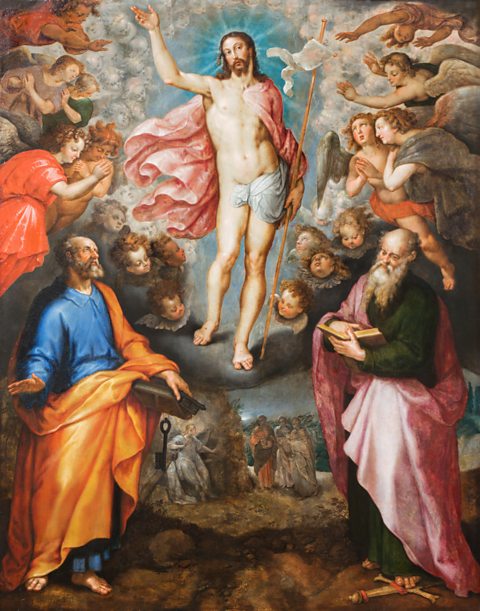Jesusâ resurrection (Luke 24:1-12)
Summary
Very early on Sunday morning the women went to the tomb, carrying the spices they had prepared. They found the stone rolled away from the entrance to the tomb, but they did not find the body of the Lord Jesus. Suddenly two men in bright shining clothes stood by them. The men said to them, âWhy are you looking among the dead for one who is alive? He is not here; he has been raised. Remember what he said to you while he was in Galilee: âThe Son of Man must be handed over to sinners, be crucified, and three days later rise to life.ââ
Then the women returned from the tomb, and told all these things to the eleven disciples. The women were Mary Magdalene, Joanna, and Mary the mother of James. But the disciples thought that what the women said was nonsense, and they did not believe them.
Peter got up and ran to the tomb. He saw the grave cloths but nothing else. Then he went back home, amazed at what had happened.

Understanding the text
The Jewish Sabbath begins at sunset on Friday, so there was not enough time for Jesusâ body to be prepared properly for burial. Jesusâ women followers returned to the tomb very early on Sunday morning to finish the task, once the Sabbath had ended.
All the Gospel writers agree that women were the first witnesses of the resurrectionThe rising of Christ from the dead, three days after the crucifixion.. In biblical times, the evidence of a woman was not held in high regard. In a law court, women could only give evidence if there were no male witnesses available. This gives credibility to the Gospel writersâ accounts of the resurrection. If they had made up their account of the empty tomb, then they would have said men were the first witnesses in order to try and make the resurrection more believable.
Through the centuries, various suggestions have been given to try and explain the empty tomb. Perhaps the disciples stole the body to fake a resurrection. Alternatively, maybe Jesus was not dead, only unconscious and later left the tomb. There are details in this passage that make these suggestions unlikely. The tomb was sealed with a large rock so it would be difficult, if not impossible, for Jesus to leave the tomb even if he did recover. Also, the attitude of the disciples and Jesusâ women followers shows that they simply did not expect a physical resurrection to happen and they had to be reminded of Jesusâ teaching.